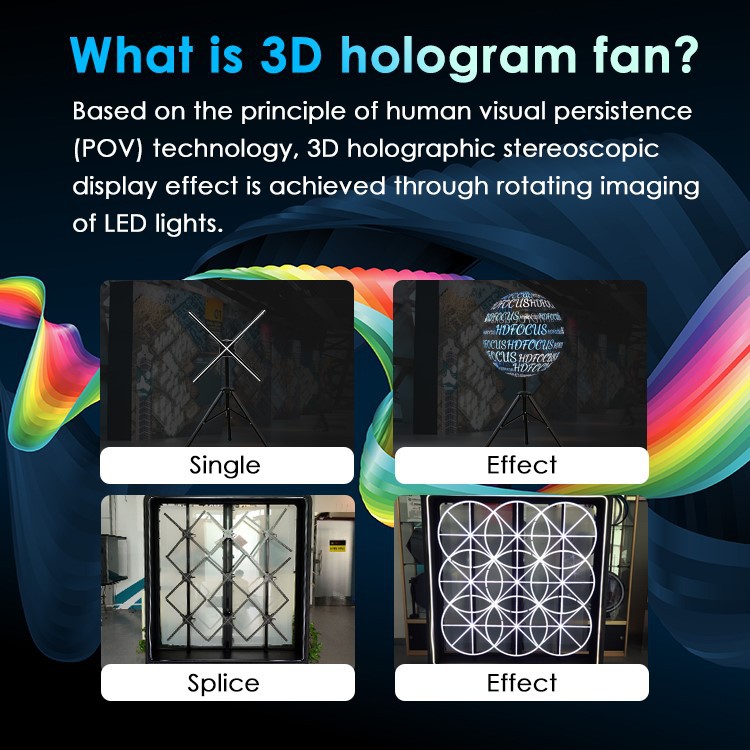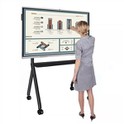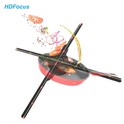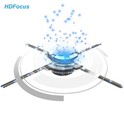From Sci-Fi Fantasy To Reality: The 3D Hologram Fan Is Here To Stay
When many people think of futuristic technology, they may imagine flying cars or teleportation devices.
However, one of the most exciting new developments in recent years may be slightly more mundane,
but no less impressive: the 3D hologram fan.
These devices, which create stunning 3D visuals that appear to float in mid-air without any physical support,
have been a staple of science fiction for decades. But only relatively recently have they made the transition
from fantasy to reality. Today, hologram fans are being used for everything from advertising and entertainment
to education and medical training.

So how do they work? The basic principle is simple: a spinning blade inside the unit creates a rapid air flow,
which in turn propels a series of LED lights mounted on the outer edge of the blade. The lights are timed and
programmed to project a sequence of images that create the illusion of a three-dimensional object or scene.
Of course, there is much more to creating a convincing hologram than simply spinning some LEDs. The
science behind it involves complex optical physics and engineering, as well as advanced software and CGI
techniques. And as with any new technology, there have been challenges and setbacks along the way.
For instance, one early obstacle was creating high-resolution images that could be projected in a wide enough
angle to create a convincing 3D effect. Another was developing a powerful enough motor to spin the blade
at high speeds without overheating or creating too much noise.
But despite these challenges, hologram fans have come a long way in a short time. Today, they can produce
incredibly detailed images, with some models boasting resolutions of up to 1600 x 1600 pixels. They can also
project images over a wide viewing angle and at various distances, making them useful for a variety of applications.
Perhaps one of the biggest benefits of hologram fans is their ability to grab people's attention and provide a
unique and immersive experience. For example, a hologram fan in a store window can generate eye-catching
3D images that stand out from the surrounding scenery. Or a hologram fan used in a classroom can create
vivid, interactive lessons that keep students engaged and excited to learn.
In the entertainment industry, hologram fans have become a popular tool for creating visual effects and performers.
One notable example is the late musician Prince, who in 2018 was brought back to life as a 3D hologram for a
performance at the Super Bowl halftime show. And in Japan, virtual pop stars Hatsune Miku and Aimi Nakamura
have become sensations, with millions of fans tuning in to watch their hologram concerts.
Looking ahead, it's clear that the possibilities for hologram fans are only just beginning to be explored. As the
technology continues to improve and become more affordable, we can expect to see even more creative and
innovative applications in the years to come.
So while flying cars and teleportation may still be a ways off, the 3D hologram fan is proof that the future is already
here – and it's pretty exciting.
Related News
- HDFocus Exhibits At InfocommUSA 202...
- HDFocus Invites You To Meet At Info...
- HDFocus Made Great Achievements in ...
- HDFocus Meets You in InfoComm Asia
- The Ultimate Guide To The 180CM 3D ...
- ISE 2023 - The World's Leading AV Expo
- HDFocus Team Visits Indonesia, Secu...
- What Are The Benefits Of Hologram F...
- What Is The Difference Between 2 Bl...
- Warmest Christmas Wishes From HDFoc...
- How 3D Hologram Fans Are Changing T...
- Unbeatable Advertising Power: How 3...
- The Ultimate Guide To Using 3D Holo...
- Get Ready For The December Purchasi...
- Set Your Advertising Aglow With The...
- Get Ready To Amaze The Crowd With H...
- Holographic Fan: Revolutionizing Th...
- Holographic Fan - The Future Of Vis...
- Holographic Fan - A Game-Changer in...
- Holographic Fan: Creating A Memorab...









